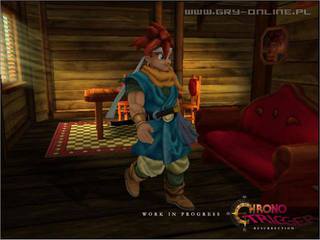
Play Chrono Trigger Game on SNES Super Nintendo Online in your Browser. Quick & Easy! Enter NOW and Start Playing for FREE on My Emulator Online!
The logo of the project's second version, based on 's own logo Resurrection Games Nathan Lazur Luis Martins Mathew Valente Series (unofficial) (as CT64),, Release None (set to December 25, 2004 before public closure) Mode(s) Chrono Resurrection, also known as Chrono Trigger: Resurrection, is an unreleased developed by North American team Resurrection Games under Nathan Lazur's direction. It is based on the critically acclaimed by the Japanese company. Ithaca Skb 100 Serial Numbers. The project was initially called CT64 and was meant to be a complete of the original game for the, with both and playing modes. After a first interruption in development, the project was redefined as a short for -based personal computers. New team members, including professional artists and designers, were recruited for the demo, which would feature ten scenes from Chrono Trigger and most of its playable characters.
In 2004, the project was publicly closed after issued a letter to Resurrection Games for and. Despite its closure, the project has received critical and popular praise.
Contents • • • • • • • Nintendo 64 version [ ] Nathan Lazur initially planned to create a Chrono Trigger for the Nintendo 64, called CT64, using -based. Lazur's motivation for the project came in 1999 when playing Chrono Trigger and. The remake, developed by a team of four people, was Lazur's first attempt at creating a complete title. The game was intended to have two playing modes and the same as the original.
The first mode would feature 2D and graphics enhanced with 3D spell and battle effects. Some of the effects created by Lazur would rely on software programming rather than the Nintendo 64 hardware, as the latter would not be capable of rendering them directly. The second mode would be a full 3D mode played in either regular or high, and would feature different textures depending on camera distances, to maximize clarity and performance. Both modes would be in a, although more cinematic camera angles, similar to those from, were also considered for the 3D mode. Airprime Mc8775 Driver. A gallery feature was also planned and would allow players to unlock bonus material depending on their progression in the game. Fan artwork and music would be unlockable through this feature, as well as, including a card game similar to from. The remake was expected to be released on the Internet for free and played on, since there would be no version due to financial constraints.
Only a semi-working 3D test was actually completed, and the project was discontinued in mid-2000 due to a number of factors, including the accidental loss of Lazur's data and his desire to improve his programming skills. Second version [ ]. Concept art by Luis Martins, depicting his take on the character originally designed by Development [ ] The second version of the project, tentatively called Chrono Trigger: Brink of Time then Chrono Resurrection, started development in April 2003. Lazur has given several reasons to explain his willingness to restart the project, including his experience coding for the, programming for game developer DC Studios, and playing, the official sequel to Chrono Trigger for.
Unlike CT64, the second version would be a short demo developed in a with a single 3D playing mode. The version was planned for a free Internet release, while and ports would be reserved for official developers with access to of either of the two consoles. The new development team was mostly recruited on the game developers website and worked in a small studio in Lazur's apartment, in,, Canada. The team included up to nine members, most of which had about two-and-a-half years of experiences in the industry.
Lazur has admitted that he began to seriously focus on the quality of the demo only after Luis Martins joined the project. Other professional designers in the team included Moise Breton, a 3D artist who had worked on character models for the commercially successful movie, and Michel Cadieux, an who had worked for game company. Remove Stinger Program. Difficulties were encountered in the game engine development as Lazur was the unique programmer and worked from scratch. The score for the demo was composed by Mathew Valente, who had been with the project since its Nintendo 64 version.